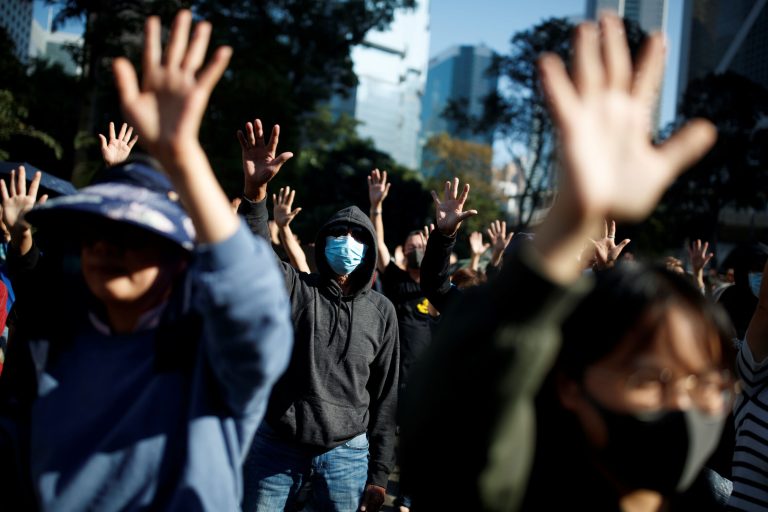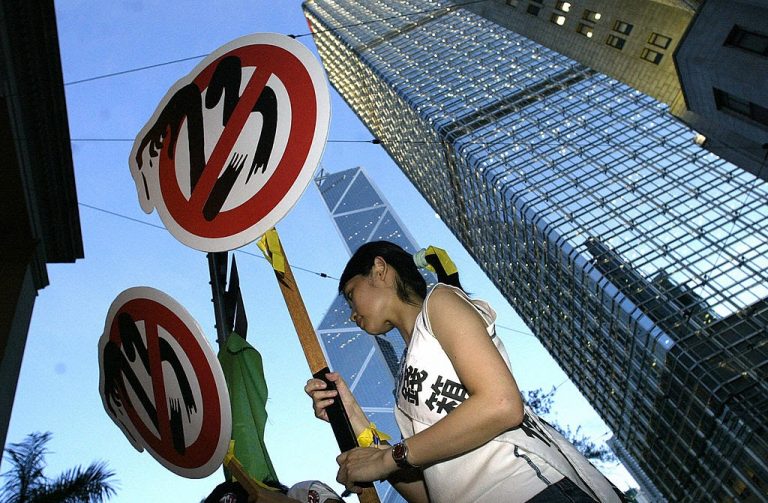As the number of infected people continued to increase in the past week, Hong Kong authorities set up an online system on March 7 to record the results of rapid testing administered by residents themselves in an effort to curb further spread of the virus.
After the system was launched, about 200,000 people registered online that same night. HK Health authorities announced the next day that more than 10,000 of those tests were confirmed as positive.
Ou Jiarong, Chief Doctor of the Infectious Diseases Division for the Center of Health Protection said at a press conference today that more than 500,000 people have been diagnosed with COVID-19 in Hong Kong. Since symptoms of the Omicron variant are sometimes milder in comparison to other strains, there are bound to be asymptomatic infections and the actual number of infections may be much higher, Ou added.
READ MORE:
- Hong Kong Hospitals Placing Body Bags Under Patients’ Beds as COVID-19 Surges Out of Control
- Meanwhile In Hong Kong: COVID Cases and Deaths Touch the Sky
- China’s ‘Zero-COVID’ Measures Continue as Parts of Shenzhen Placed Under Lockdown
According to Radio Television Hong Kong, Yuen Guoyong, a senior advisor and professor at the Department of Microbiology in the University of Hong Kong, said that at least 1 out of 20 people in Hong Kong is currently infected with the virus, and that a worst case scenario would indicate infection in 1 out of 5 people.
Success
You are now signed up for our newsletter
Success
Check your email to complete sign up
Yuan added that more than 80 percent of nursing homes in Hong Kong are currently battling new outbreaks. Seniors or immunocompromised people living in the same household, including children under the age of 4, should be vaccinated and tested everyday as a precaution.

China’s ‘Zero-COVID’ policies bleed into Hong Kong
Authorities in Hong Kong have adopted a “zero-COVID” strategy, aligning its coronavirus measures with China’s stringent regulations as it seeks to resume quarantine-free travel and transition to pre-pandemic life.
In its drive to completely eradicate the pandemic from China, the Chinese Communist Party (CCP) placed the northwestern city of Xi’an, home to roughly 13 million, into a strict lockdown lasting over three weeks in December 2021. Other metropolis’ such as Shenzhen and Xiamen have also been placed into partial lockdowns recently as new cases are discovered.
During the lengthy lockdown, residents in Xi’an took to social media to voice complaints about brutal or extreme treatment by local officials or hospital staff after being barricaded inside their homes for weeks on end and facing dwindling supplies of food and essentials. Some residents even reported loved ones dying after being denied medical attention due to the country’s strict COVID measures.
Although the pandemic has claimed millions of lives worldwide and caused catastrophic economic losses for some countries, Chinese authorities claim slightly over 101,000 infections and less than 5,000 deaths nationwide — hailing its “zero COVID” policies as instrumental.
Despite this claim, there has been considerable doubt cast over the veracity of these figures as well as the effectiveness of Beijing’s heavy-handed lockdown policies and quarantine measures. These policies have included disinfection theatrics, draconian lockdowns, mass testing and travel restrictions to sustain China’s illusion of curbing the pandemic’s spread, oftentimes resulting in tragedy or violence.
China’s ongoing struggle with the pandemic has also resulted in severe economic losses as businesses are forced to remain closed and demand for goods and services is decreased.













